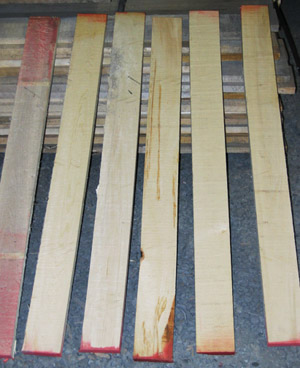Description£º
Aspen is a generally recognized name that is applied to bigtooth (Populus grandidentata) and quaking (P. tremuloides) aspen. Aspen does not include balsam poplar (P. balsamifera) and the other species of Populus that are included in the cottonwoods. In lumber statistics of the U.S. Bureau of the Census, however, the term cottonwood includes all the preceding species. Also, the lumber of aspen and cottonwood may be mixed in trade and sold as either popple or cottonwood. The name popple should not be confused with yellow-poplar (Liriodendron tulipifera), also known in the trade as poplar. Aspen lumber is produced principally in the Northeastern and Lake States, with some production in the Rocky Mountain States.
The heartwood of aspen is grayish white to light grayish brown. The sapwood is lighter colored and generally merges gradually into the heartwood without being clearly marked. Aspen wood is usually straight grained with a fine, uniform texture. It is easily worked. Well-dried aspen lumber does not impart odor or flavor to foodstuffs. The wood of aspen is lightweight and soft. It is low in strength, moderately stiff, and moderately low in resistance to shock and has moderately high shrinkage.
Aspen is cut for lumber, pallets, boxes and crating, pulpwood, particleboard, strand panels, excelsior, matches, veneer, and miscellaneous turned articles. Today, aspen is one of the preferred species for use in oriented strandboard, a panel product that is increasingly being used as sheathing.

